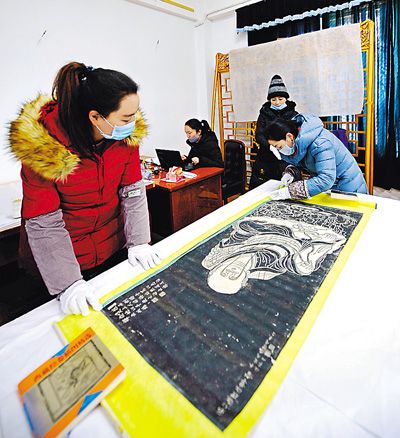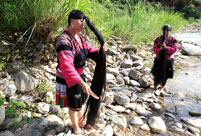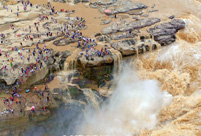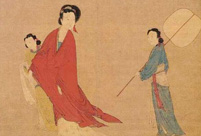


In the Potala Palace, a worker measures a suit of armor belonging to a high-ranking official in the Qing Dynasty. Beside him, another colleague inputs the data into a computer.
"In three months, we have sorted through 2,000 tangkas, a kind of scroll painting in Tibet, and classified them according to their year and condition," said Kunga Tashi, an official at Potala Palace. In addition to paper files, a complete set of videos of the relics will also be prepared. So far, a total of 100,000 cultural relics in Potala Palace have been examined and documented.
According to Awang Qunzeng, vice director of Drepung Monastery's administrative committee, the government has invested 70 million yuan in the protection of cultural relics at the monastery.
The central government has invested nearly 3 billion yuan in the protection of cultural relics in Tibet over the past two decades. In the 13th Five-Year Plan period, that investment will double to reach at least 2 billion yuan, according to Liu Yuzhu, director-general of the State Administration of Cultural Heritage.
Respecting traditions and relying on technology
Great effort has been put into the protection and repair of cultural relics in Tibet. In the repair project at Samye Temple, which began in April, the government invested 11 million yuan to facilitate repairs using traditional methods.
"In the 1980s, cement was used to repair Wuzi Hall. This time we will remove all the cement and repair the hall using a traditional technique," said Jampa Tsering, director of the Cultural Relics Bureau of the city of Shannan.
Technology also plays an important role in preservation. In July 2013, the Palace Museum and Jhokang Temple decided to build a database for all the relics at Jhokang Temple.
"We can use 10 images of a Buddha statue to create a panorama view, which displays its most beautiful parts," said Luo Wenhua, a researcher from the Palace Museum. Using modern data collection technology, the colors, lines and figures in the temple's murals also become clear.
"This is the most advanced data collection in China, and it is also the first time that the temple relics have been sorted in a modern way," Luo added.
 Huangluo: China's 'long hair village'
Huangluo: China's 'long hair village' Spectacular bridge with one of the tallest piers in the world
Spectacular bridge with one of the tallest piers in the world Magnificent view of Hukou Waterfall
Magnificent view of Hukou Waterfall A glimpse of Stride 2016 Zhurihe B military drill
A glimpse of Stride 2016 Zhurihe B military drill US Navy chief tours Liaoning aircraft carrier
US Navy chief tours Liaoning aircraft carrier Chinese American woman wins Miss Michigan
Chinese American woman wins Miss Michigan Centenarian couple takes first wedding photos
Centenarian couple takes first wedding photos Traditional Tibetan costumes presented during fashion show
Traditional Tibetan costumes presented during fashion show How did ancient people escape the summer heat
How did ancient people escape the summer heat Top 10 livable Chinese cities
Top 10 livable Chinese cities Top 20 hottest women in the world in 2014
Top 20 hottest women in the world in 2014 Top 10 hardest languages to learn
Top 10 hardest languages to learn China’s Top 10 Unique Bridges, Highways and Roads
China’s Top 10 Unique Bridges, Highways and Roads Iron ladies
Iron ladies Liushen Florida Water takes off in the US
Liushen Florida Water takes off in the US US athelets crazy about China's 'bahuoguan' — cupping
US athelets crazy about China's 'bahuoguan' — cupping Tomb raiding helped by private museums that buy relics from thieves
Tomb raiding helped by private museums that buy relics from thievesDay|Week